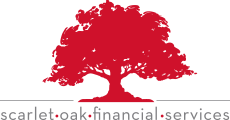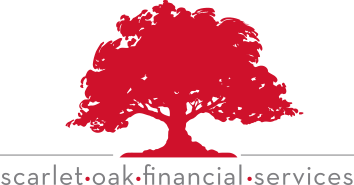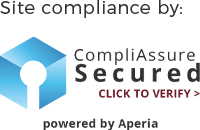Introduction
Equalizing estate distributions can be a challenge for business owners who want to treat all heirs fairly while ensuring the continuity of their closely held business. Life insurance offers a flexible, tax-efficient way to balance inheritances between children who will take over the business and those who will not. By structuring policies as part of a broader estate plan, you can create liquid assets for nonparticipating heirs, fund stock redemptions, or finance buy-sell agreements. This approach helps prevent disputes, avoids forcing the sale of business assets, and ensures that both participating and nonparticipating children receive equitable value from your estate.
How can life insurance be used to equalize estate distributions?
Life insurance can be used to equalize estate distributions between children who participate in your closely held business and those who don’t. A plan of succession can be structured to leave your business to your participating children and life insurance proceeds of equal value to your nonparticipating children. You can use a life insurance policy in your estate equalization plan to accomplish the following:
- Create an asset for your children who are not active in your business
- Fund a buy-sell agreement to equalize distributions
- Fund a stock redemption to equalize distributions
Create an asset for your children who are not active in your business
When some of your children work in the business with you, you may want to leave the business to them. You may also want to provide your children who are not participants in the business with something of equal value. You can use life insurance to create an asset that will provide an equivalent amount of cash for those children who are not participants in the business.
Here’s how it works: You could arrange for your company to buy a life insurance policy covering your life, with your nonparticipating children named as beneficiaries. You would make arrangements to transfer your business to your participating children who will succeed you as owners of the business, enjoying complete ownership and control.
Nonparticipating children receive insurance proceeds at your death
When you die, your nonparticipating children receive a cash payment of the life insurance death benefit. The distribution is not contingent on the future liquidity of the business (as it would be in the case of a minority position with buy-sell over time).
When structured properly, insurance proceeds not included in estate
Estate taxes may be avoided or minimized if neither you nor your estate are named beneficiaries of the policy, and you have no incidents of ownership over the policy. To avoid incidents of ownership, the policy should be owned by the business itself or held in an irrevocable life insurance trust. This is a highly technical area. You should consult an expert tax planner.
Life insurance to fund an equalizing stock redemption
You can also use life insurance to fund a stock redemption for the purpose of equalizing distributions to your children. You can enter into a stock redemption agreement with your company, which obligates the company to redeem (buy back) shares of your stock that you have left to your children. Money for the stock redemption would come from the proceeds of a life insurance policy owned by the company. The company would be the policy beneficiary. Key employee life insurance is an example of this kind of policy.
You would also make arrangements to transfer all your shares of the business to your children in equal amounts. When you die, the stock redemption agreement would require the company to redeem the shares of your business held by your nonparticipating children using the life insurance proceeds. Your nonparticipating children will receive cash for their stock, and your participating children will be left as shareholders in the business. If you have maintained no incidents of ownership in the insurance policy (as defined by the IRS), the insurance proceeds will not pass through your estate and will not be subject to estate tax.
Life insurance to fund an equalizing buy-sell agreement
Life insurance can also be used to fund a buy-sell agreement for the purpose of equalizing distributions to children. You can arrange for the company to purchase a life insurance policy that will pay your participating children a benefit upon your death. You would also set up a buy-sell agreement that obligates your participating children to buy (and your estate to sell) your interest in the business from your estate using the life insurance proceeds. This will leave the estate with cash that can be distributed in such a manner as to equalize distributions to children.
What are the advantages to using life insurance for estate equalization?
Children not active in business get quick cash settlement
Each of these planning solutions would allow your nonparticipating children to receive a prompt cash distribution that is not contingent on the liquidity of the business after your death.
Participating children get full ownership of the business
Those children who are active in your business acquire and maintain full ownership and control of the business. They are freed from having to share ownership or having to provide future payments to siblings.
Conclusion
When used strategically, life insurance can be a powerful tool for estate equalization, providing immediate liquidity to nonparticipating heirs while allowing active heirs to retain full ownership and control of the business. The result is a smoother transition, minimized family conflict, and preserved business operations. However, the design and ownership structure of the policy are critical to avoiding unnecessary taxes and meeting your goals. Because these strategies involve complex tax, legal, and insurance considerations, working with a coordinated team of advisors—including an estate planning attorney, tax professional, and insurance specialist—is essential to implementing a plan that is both fair and financially efficient.
Scarlet Oak Financial Services can be reached at 800.871.1219 or contact us here. Click here to sign up for our newsletter with the latest economic news.
Source:
Broadridge Investor Communication Solutions, Inc. prepared this material for use by Scarlet Oak Financial Services.
Broadridge Investor Communication Solutions, Inc. does not provide investment, tax, legal, or retirement advice or recommendations. The information presented here is not specific to any individual’s personal circumstances. To the extent that this material concerns tax matters, it is not intended or written to be used, and cannot be used, by a taxpayer for the purpose of avoiding penalties that may be imposed by law. Each taxpayer should seek independent advice from a tax professional based on individual circumstances. Scarlet Oak Financial Services provide these materials for general information and educational purposes based upon publicly available information from sources believed to be reliable — we cannot assure the accuracy or completeness of these materials. The information in these materials may change at any time and without notice.



